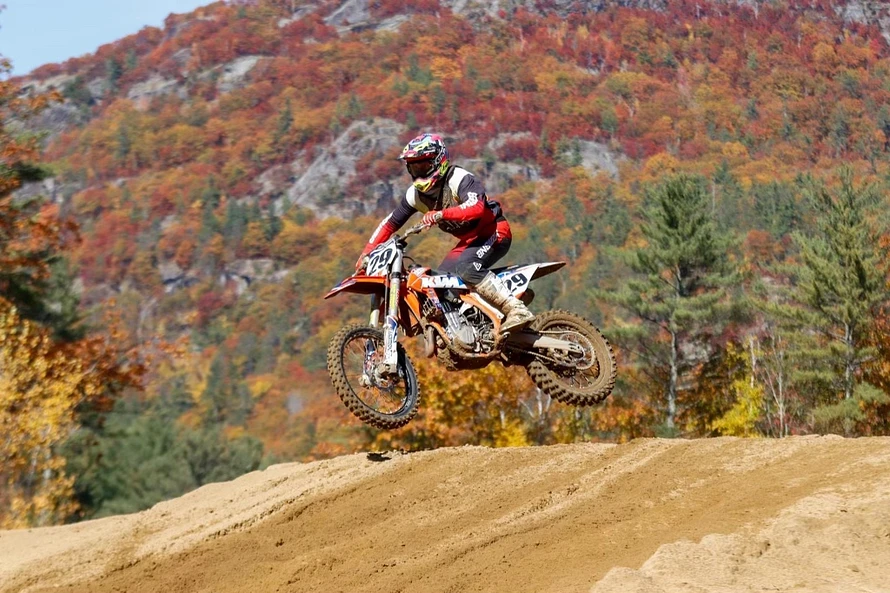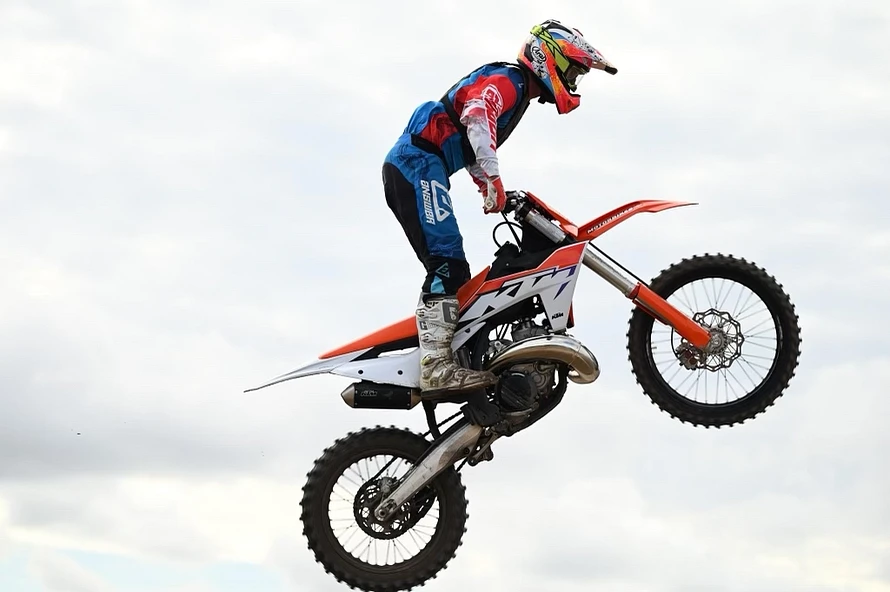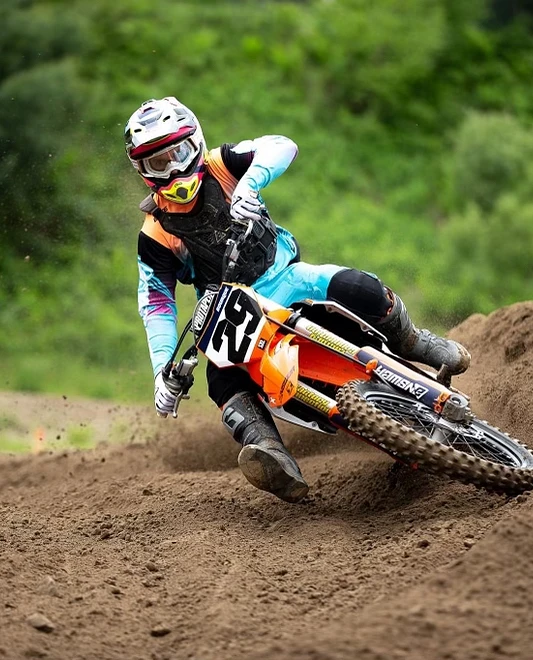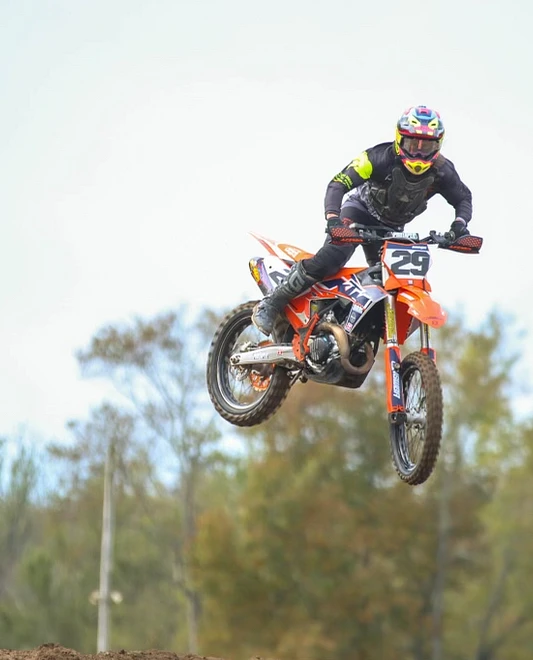Entering Your First Competitive Motocross Event: A Beginner’s Guide
Participating in your first competitive motocross event can be both thrilling and daunting. This guide will walk you through the steps to ensure you’re prepared, confident, and ready to race.
1. Understand the Basics of Motocross Racing
Before you enter a race, familiarize yourself with the fundamentals of motocross. This includes understanding the race format, rules, and the different classes of competition. Research local motocross clubs or organizations and attend events as a spectator to get a feel for the environment.
2. Get the Right Gear
Safety is paramount in motocross. Ensure you have the appropriate gear, including a DOT-approved helmet, goggles, motocross boots, gloves, a chest protector, and suitable riding attire. Investing in quality safety gear not only protects you but also boosts your confidence on the track.
3. Prepare Your Motorcycle
Your bike should be race-ready, meeting the technical specifications and safety standards of the competition. This includes checking the engine, suspension, brakes, and tires. Make sure your motorcycle is well-maintained and suited for the rigors of racing.
4. Practice and Train
Regular practice is crucial. Spend time on different tracks to improve your riding skills, focusing on starts, turns, jumps, and overall bike control. Physical fitness is also essential, as motocross demands strength, endurance, and agility. Incorporate cardio, strength training, and flexibility exercises into your routine.
5. Register for the Event
Once you’re confident in your skills and preparation, register for an event suitable for your level. Beginners should look for local races or amateur divisions. Ensure you understand the registration process, fees, and the event schedule.
6. Understand the Track and Event Protocol
Before race day, familiarize yourself with the track layout and the event’s schedule. Attend the riders’ meeting, where officials will discuss the race format, rules, and safety information. Walk or ride the track during designated times to get a sense of the terrain and identify challenging sections.
7. Manage Race Day Nerves
It’s normal to feel nervous before your first race. Focus on your training, trust your skills, and remember that the goal is to gain experience and improve. Warm up properly, mentally visualize the race, and stay hydrated and nourished.
8. Race with Respect and Sportsmanship
On the track, race fairly and with respect for your fellow competitors. Be aware of your surroundings, adhere to the rules, and ride safely. Good sportsmanship is essential, regardless of the race outcome.
9. Reflect and Learn
After the race, take time to reflect on your performance. Identify areas for improvement and celebrate your achievements. Feedback from other riders and coaches can provide valuable insights for your development.
Entering your first competitive motocross event is an exciting step in your riding journey. With the right preparation, mindset, and respect for the sport, you can make it a memorable and rewarding experience.
Advanced Motocross Bike Mechanics: Tuning for Optimal Performance
For advanced motocross riders, understanding and fine-tuning the mechanics of their bike is as crucial as their riding skills. This post will explore the intricate aspects of motocross bike mechanics that can significantly impact performance on the track.
Suspension Tuning: The Art of Balance
Suspension setup is a critical factor in motocross, affecting handling, comfort, and speed. Advanced riders must know how to adjust their suspension to match their riding style and the track conditions.
- Compression and Rebound Damping: Adjusting the compression and rebound settings on your forks and shock can drastically change how the bike feels and performs. Fine-tuning these settings can improve traction, reduce fatigue, and enhance control over bumps and jumps.
- Spring Rates and Preload: Selecting the right spring rate for your weight and riding style, combined with the correct preload setting, ensures the bike maintains optimal ground contact and balance.
Engine Tuning and Performance
Maximizing engine performance is vital for competitive motocross riding. Advanced tuning can lead to better throttle response, increased power, and improved overall performance.
- Exhaust and Intake Systems: Upgrading to high-performance exhaust and intake systems can significantly increase airflow, improving engine efficiency and power output.
- Ignition and Mapping: Customizing the ignition timing and fuel mapping for your engine can optimize its performance, especially when tailored to specific track conditions and riding styles.
Tire Selection and Pressure
Tires are the only point of contact between the bike and the ground, making their selection and maintenance critical for peak performance.
- Tire Choice: Depending on the track conditions (such as soft, intermediate, or hard terrain), selecting the appropriate tire type can provide better traction, control, and durability.
- Tire Pressure: Fine-tuning tire pressure can affect the bike’s handling characteristics. A slight adjustment can lead to significant changes in grip and feedback from the terrain.
Drive Train Optimization
The drive train’s efficiency directly impacts the bike’s responsiveness and speed. Advanced riders should regularly inspect and fine-tune these components.
- Chain and Sprockets: Maintaining the correct chain tension and ensuring sprockets are in good condition can prevent power loss and mechanical failures. Experimenting with different sprocket sizes can also alter the bike’s acceleration and top speed characteristics.
- Clutch Adjustments: The clutch is a critical control element in motocross, used for more than just changing gears. Adjusting the clutch’s engagement point and stiffness can provide better control over the bike’s power delivery, especially during starts and tight corners.
Regular Maintenance and Diagnostics
To ensure consistent performance, advanced riders must maintain a strict maintenance schedule and regularly perform diagnostic checks.
- Pre- and Post-Ride Inspections: Thoroughly inspecting the bike before and after rides can prevent small issues from becoming major problems.
- Data Logging and Analysis: Using data logging tools to record and analyze performance can help identify areas for mechanical improvement and ensure the bike is operating at peak efficiency.
Understanding and optimizing the mechanics of a motocross bike can lead to significant performance gains on the track. Advanced riders who invest time in tuning their bikes not only gain a competitive edge but also develop a deeper connection with their machines, leading to better overall racing experiences.
Upgrading Your 2024 KX450 with Stock 2024 KX250 Triple Clamps: A Comprehensive Guide
Motorcycle enthusiasts often seek to enhance the performance and handling of their bikes by swapping parts. One such modification is fitting the stock 2024 KX250 triple clamps onto a 2024 KX450. This guide delves into the process, benefits, and considerations of this upgrade.
Understanding Triple Clamps
Triple clamps, or triple trees, are crucial components in a motorcycle’s front suspension system. They connect the fork tubes to the motorcycle’s frame, allowing for steering and providing stability. The geometry and design of the triple clamps can significantly affect handling, steering precision, and front-end feedback.
Compatibility and Benefits
The 2024 KX250 and KX450 models share similar chassis designs, making the swap feasible. This upgrade can offer several benefits:
- Improved Handling and Flex Characteristics: The KX250 triple clamps might provide a different flex characteristic, which can enhance the handling and feel of the KX450, especially in tight corners and rough terrain.
- Weight Reduction: The KX250’s triple clamps may be lighter, contributing to a slight reduction in overall weight and enhancing the bike’s agility.
- Aesthetic Appeal: For some riders, the visual aspect of matching specific parts like triple clamps to their bike is important, giving it a customized look.
Installation Process
- Preparation: Ensure you have the necessary tools, including a torque wrench, Allen keys, and socket set. Also, consult the service manuals for both KX250 and KX450 models to understand the specifications and torque settings.
- Remove the Existing Triple Clamps: Start by loosening the bolts on the handlebars, control cables, and front fork. Carefully remove the handlebars and place them aside. Proceed to loosen and remove the top and bottom triple clamps from the KX450.
- Install the KX250 Triple Clamps: Position the bottom triple clamp from the KX250 onto the KX450’s fork tubes and steering stem. Ensure proper alignment and torque the bolts to the specifications found in the service manual. Repeat the process with the top triple clamp, ensuring the forks are evenly positioned and the handlebars are mounted securely.
- Final Adjustments and Checks: After installation, check the alignment of the front wheel and handlebars. Ensure all controls are easily accessible and functioning correctly. It’s crucial to test ride in a safe environment to assess the new setup and make any necessary adjustments.
Considerations and Tips
- Expert Consultation: If you’re uncertain about any step of the process, consult with a professional mechanic or someone experienced in motorcycle modifications.
- Safety First: Always prioritize safety, ensuring each component is securely fastened and the motorcycle is stable before riding.
- Handling Differences: Be aware that changing the triple clamps can alter the bike’s handling. Take time to get accustomed to the new setup before pushing the limits.
Swapping the stock triple clamps from a 2024 KX250 to a 2024 KX450 can be a rewarding project for riders looking to customize their bike’s performance and handling. With the right tools, knowledge, and attention to detail, this modification can enhance your riding experience.
2024 KX450 vs. 2024 CRF450R Review
In the world of motocross, the competition is fierce, not just between riders but also among the machines they ride. Two of the top contenders in the motocross scene are the 2024 Kawasaki KX450 and the 2024 Honda CRF450R. This comparison delves into the pros and cons of each bike, offering insights for riders considering their next high-performance machine.
2024 Kawasaki KX450: A Legacy of Performance
Pros:
- Power Delivery: The KX450 is renowned for its strong and linear power delivery. Its engine offers robust low-end torque and a smooth transition to mid-range and high-end power, making it versatile across different track conditions.
- Ergonomics and Comfort: Kawasaki continues to prioritize rider comfort and control. The KX450 boasts an adjustable ergonomic setup, allowing riders to fine-tune handlebar position, footpeg placement, and seat shape to suit their style and build.
- Suspension Tuning: With its advanced suspension system, the KX450 provides excellent damping and rebound control, which can be precisely adjusted to match rider weight and riding conditions.
Cons:
- Weight: The KX450 is on the heavier side when compared to some of its rivals. This extra weight can be felt during long races, potentially affecting rider fatigue and maneuverability.
- Price: With its high-end features and performance capabilities, the KX450 comes with a premium price tag, which might be a consideration for budget-conscious riders.
2024 Honda CRF450R: The Cutting-Edge Contender
Pros:
- Innovative Technology: The CRF450R is often at the forefront of motocross technology. The 2024 model includes advanced features like launch control, selectable power modes, and a sophisticated traction control system, providing riders with a tech-rich riding experience.
- Engine Performance: Honda’s CRF450R is known for its explosive power output, particularly in the mid to high RPM range. This makes it a favorite for riders who prioritize speed and acceleration.
- Handling and Agility: The CRF450R’s lightweight frame and responsive steering geometry make it exceptionally agile, allowing for quick direction changes and superior handling on technical tracks.
Cons:
- Aggressive Powerband: While the powerful engine is a plus, it can be challenging to manage, especially for less experienced riders. The aggressive powerband requires skillful throttle control to harness effectively.
- Maintenance and Complexity: The advanced features and systems on the CRF450R can make maintenance more complex and time-consuming. Riders need to be diligent with upkeep to ensure the bike performs at its best.
Head-to-Head Comparison
When comparing the KX450 and CRF450R, the choice often comes down to rider preference and style. The KX450 is a solid all-rounder with great power delivery and comfort, making it suitable for a wide range of riders. On the other hand, the CRF450R offers cutting-edge technology and explosive performance, appealing to those who crave speed and technical prowess.
In conclusion, both the 2024 Kawasaki KX450 and the 2024 Honda CRF450R are top-of-the-line motocross bikes with their own set of strengths and weaknesses. The KX450 is ideal for riders looking for a reliable, well-rounded machine, while the CRF450R caters to those who value advanced technology and high-octane performance. Ultimately, the best choice will depend on the individual rider’s needs, skills, and budget.





